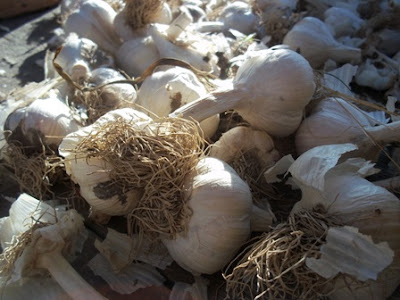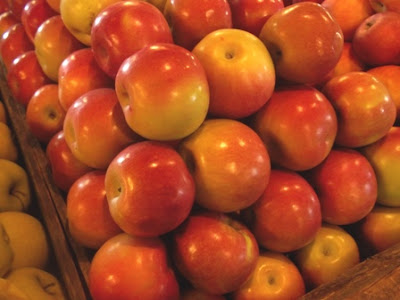The best things in life are nearest: Breath in your nostrils, light in your eyes, flowers at your feet, duties at your hand, the path of right just before you. Then do not grasp at the stars, but do life's plain, common work as it comes, certain that daily duties and daily bread are the sweetest things in life.
~Robert Louis Stevenson
I am just a bit melancholy, but mindful of the simple gifts that flourish at Restoration Farm.
This season the food from the farm was less about striving for fussy culinary achievements. It was about the snap of a green bean, the tenderness of young spinach leaves, the earthiness of a golden beet, the savory richness of a tomato or the creaminess of a freshly-harvested potato.
I was not always happy with my stewardship of my share. I didn’t volunteer to work enough, and I didn’t seem to be on top of preparing or preserving the food I received. Too often items were wasted, and when that happened I was ashamed. When I think of how quickly the months flew by, I regret the food that was wasted.
There is a sense of solitude as I walk down the wooded path for the final visit of the season. The air is crisp and cold. I recall summer mornings in the berry field where – at times – it was just me and the bees, and perhaps the only peace I would find during seven days of mayhem. Because the farm is part of an historic village, there were moments when I believed I was a time traveler and I wondered what century I was in. On occasion, a lone interpreter would walk by in rustic 19th century garb and I’d have to pinch myself. I remember the morning the serenity of the berry field was abruptly shattered by a gunshot from a Civil War encampment on the other side of the road.
The fields are nearly slumbering now, covered with a blanket of green. Head Grower Dan Holmes just loves the cover crop. For him, it symbolizes the rejuvenation and nourishment of the soil for the season to come.
At the final distribution, there are leeks and red cabbage, more of my favorite beets and carrots, and even some lovely autumn lettuce to remind us of how it all began.
Even as the season draws to a close, the community of members gathers once more to plant garlic. We sit at wooden tables and split cloves that will be pushed into the soil. It is miraculous when you consider how a single clove of garlic will multiply.
The community continues to multiply. George is at a table pulling apart the cloves, and there’s a new couple who have just moved here from San Diego. The pungent aroma of garlic fills the air.
We move to the field and tuck garlic cloves into dimples left in the soil. We are surrounded by flaming autumn leaves and a brilliant blue sky. I try to drink it all in. These simple moments are rare and should be savored.
Simple and sweet.
©2010 T.W. Barritt All Rights Reserved
















































